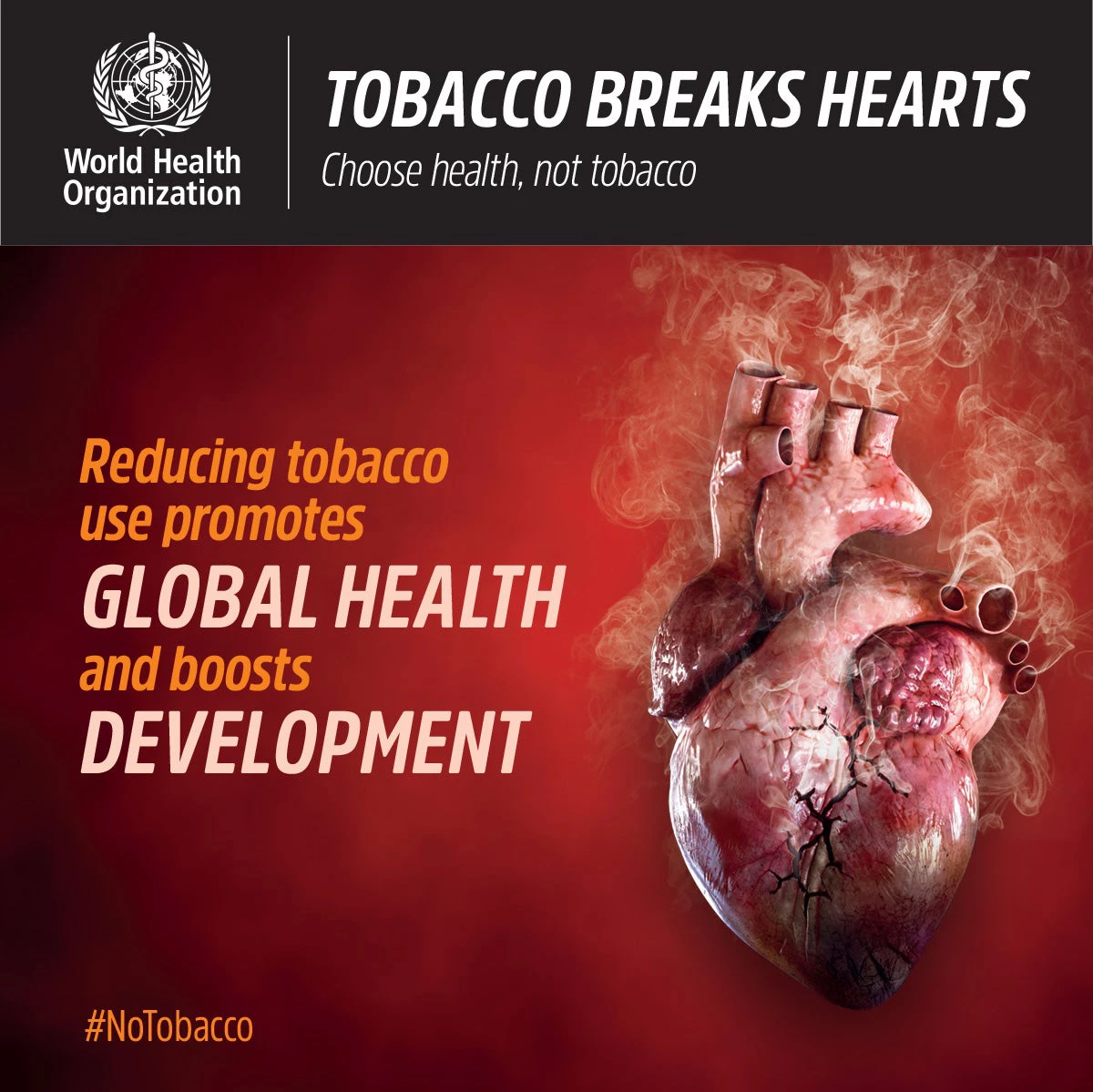Today we mark World No Tobacco Day and this year the focus is on “Tobacco and Heart Disease.” The goal is to highlight the important and often overlooked role of smoking cigarettes as a leading cardiovascular disease (CVD) risk factor.
If we look at recent data from the Institute of Health Metrics and Evaluation (IHME), we should be alarmed. CVD, which includes heart diseases and stroke, is the number 1 killer in the world, accounting for one-third of all deaths. The numbers are staggering. As evidenced in a related study, in 2015, there were more than 400 million individuals living with CVD and nearly 18 million CVD deaths worldwide.
But CVD is not only a problem in high income countries. IHME data shows that the United States, Canada, Australia, New Zealand, Japan, South Korea, and countries in Western Europe experienced steep declines over the past two decades that have begun to taper off and plateau. The countries with the greatest number of cardiovascular deaths, after accounting for population size, are found throughout Eastern Europe, Central Asia, the Middle East, South America, sub-Saharan Africa, and Oceania.
Given the increased risk for smokers of CVD, cigarette smoking is one of the leading causes of preventable death. Accumulated scientific evidence shows that nicotine, a chemical in tobacco, is highly addictive; activates biological pathways that increase risk for disease and adversely affects maternal and fetal health during pregnancy. Smoking or chewing tobacco can also immediately raise blood pressure, albeit temporarily, as the chemicals in tobacco can damage the lining of artery walls, causing arteries to narrow, increasing blood pressure.
As shown in another global study, tobacco use not only increases an individual’s risk of death from all vascular diseases two- to three-fold, but 10–30% of all CVD deaths are attributable to tobacco worldwide. Among men aged 30–44 years, however, 48% of cardiovascular deaths are attributable to tobacco use. Smokers’ risk of heart failure is twice the risk of non-smokers, and smokers with heart failure have a worse prognosis than non-smokers.
What to do?
Waiting to treat affected individuals after the onset of CVD is not a medically efficacious nor a financially sustainable course of action, particularly in low- and middle-income countries that are struggling to implement ambitious agendas to attain universal health coverage (UHC).
The time has come, therefore, for a drastic paradigm shift to embrace primary and secondary prevention as critical pillars of service provision under UHC. Indeed, health promotion and disease prevention cannot have been less valuable or secondary to treatment for controlling the spread of CVD since both are two sides of the same coin, complementing and reinforcing each other, along a continuum of interventions.
Given this preventable “CVD carnage,” there is no longer a justification for Governments to keep delaying the implementation of the Framework Convention on Tobacco Control (FCTC) demand-reduction tobacco control measures to protect the population and prevent the onset of CVD. World No-Tobacco Day offers the opportunity to recommit our effort to support countries in raising taxes sharply on tobacco products, adjusting for inflation and increased affordability due to growing incomes, to hike up prices and make these products unaffordable to reduce tobacco use and the health risks associated with tobacco-related diseases, including CVD.
Equally important, on this World No-Tobacco Day, there is a need for governments to commit to preventing youth from taking up smoking by adopting strict regulatory measures (e.g., curtail advertisement and promotion through social media) and high taxes on “low-tar and other less harm innovations,” such as e-cigarettes and vape products. This, in turn, will significantly lower their risk for CVD in the future.
Governments will do well in heeding US FDA Commissioner Scott Gottlieb, who earlier this year indicated that “these products should never be marketed to, sold to, or used by kids — and we need to make every effort to prevent kids from getting hooked on nicotine.”
As we move forward, we need to be clear that to deal effectively with CVD as a global problem, we need to put added attention and effort to deal effectively with the global tobacco use epidemic. The success of the latter will help to make major inroads to reduce the burden of CVD. That should be our take-away message for action on World No-Tobacco Day!
Related
World Bank and Global Tobacco Control



Join the Conversation